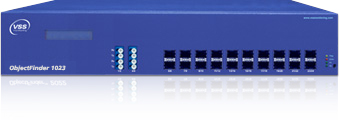A major cost to carriers the CAPEX and OPEX associated with network  monitoring and test equipment. Andy Huckridge of VSS Monitoring explains carriers spend up to $300,000 dollars on this test equipment and yet they only use the devices at about 20% of their capability. And he should know as he used to work at Spirent where I have met with him over the years at shows like Supercomm, VON and TMC’s ITEXPO (Disclosure: I am the CEO of TMC).
monitoring and test equipment. Andy Huckridge of VSS Monitoring explains carriers spend up to $300,000 dollars on this test equipment and yet they only use the devices at about 20% of their capability. And he should know as he used to work at Spirent where I have met with him over the years at shows like Supercomm, VON and TMC’s ITEXPO (Disclosure: I am the CEO of TMC).
According to Huckridge the solution to skyrocketing costs on tools entrusted with keeping the network purring like a fine Italian sports car (my words not his – but you get the idea) is a layer of intelligence to provide scalable visibility and control of traffic capture.
His company’s Network Intelligence Optimization layer proactively copies, forwards and redirects captured traffic in real-time allowing operators achieve higher service availability at lower cost.
The goal here is to allow traditional testing equipment to have unrestricted visitbility. In other words you can use an aggregator to connect to multiple network segments but then yfiou could lose link layer visibility as well as loss, jitter and packet drop information.
Solutions from VSS – handle time stamping and port stamping allowing carriers to see delayed and dropped packets as well as other crucial metadata.
If you aren’t able to do this the challenge becomes that you end up  throwing packets away as you don’t have the content to analyze the data in the tool as data traffic comes from numerous data segments. This could yield erroneous results. The company uses session-based flow-aware load balancing on its Distributed, Protector and Finder Series (pictured) models which allows traffic from one access point to be balanced to up to eight output ports using one of ten balancing criteria options such as destination MAC address, EtherType, IP address, etc. This technology is useful for allowing a 1G port to accept 10G traffic. The company also has Expert Edition models which allow the criteria to extend to 22.
throwing packets away as you don’t have the content to analyze the data in the tool as data traffic comes from numerous data segments. This could yield erroneous results. The company uses session-based flow-aware load balancing on its Distributed, Protector and Finder Series (pictured) models which allows traffic from one access point to be balanced to up to eight output ports using one of ten balancing criteria options such as destination MAC address, EtherType, IP address, etc. This technology is useful for allowing a 1G port to accept 10G traffic. The company also has Expert Edition models which allow the criteria to extend to 22.
Moreover VSS utilizes a high data burst buffer allowing you to deal with microbursts potentially as a result of congestion or video traffic which could also result in a loss of link layer visibility.
They also recently released a deduplication feature which removes duplicate packets through various network segments. As a result, the analytics tools don’t get confused and see only what they need to see – with full metadata of course.
In addition, VSS has new Defragmentation and Packet Reassembly Capability allowing it to reassemble fragments on 4G networks back into the correct order. The need for this is in part due to the 4G/LTE network’s use of GTP (GPRS Tunneling Protocol) which causes packets to reach maximum transmission unit size and subsequently need to be split into numerous fragments. By reassembling packets, analytics tools get less confused, enjoy reduced downtime and are more efficient.
Perhaps the most ambitious objective of the company is to become the middleware between the network segment and analytic tools. They want to allow allows other network monitoring tools to connect virtually to the underlying carrier switching fabric through the VSS Monitoring Fabric. Obviously in order for the company to even suggest it could do such a thing it would need to be highly reliable. And to that end the company touted its full mesh architecture where equipment is linked by two or more connections to other parts of the system.
They tell me they are working with the world’s largest mobile carrier in China in this capacity and their self-healing routing protocol coupled with advanced buffering features ensure monitored data is not lost – even if a box goes down. Moreover a converged management system makes it easier to manage.
In fact a new Network Management System on the company’s Distributed Tap Series was requested by customers. It works as follows: since the system is mesh-connected you can now update one box and this in-turn upgrades the entire system. If there is a problem the standard failsafe reverts to the prior version of the software.
Andy believes that using their solutions you not only will save a tremendous amount of money but you will utilize your monitoring tools at 80-100%. Moreover by utilizing the VSS Monitoring fabric you aren’t at the mercy of network test vendor software upgrades which could cause downtime and inconvenience.





